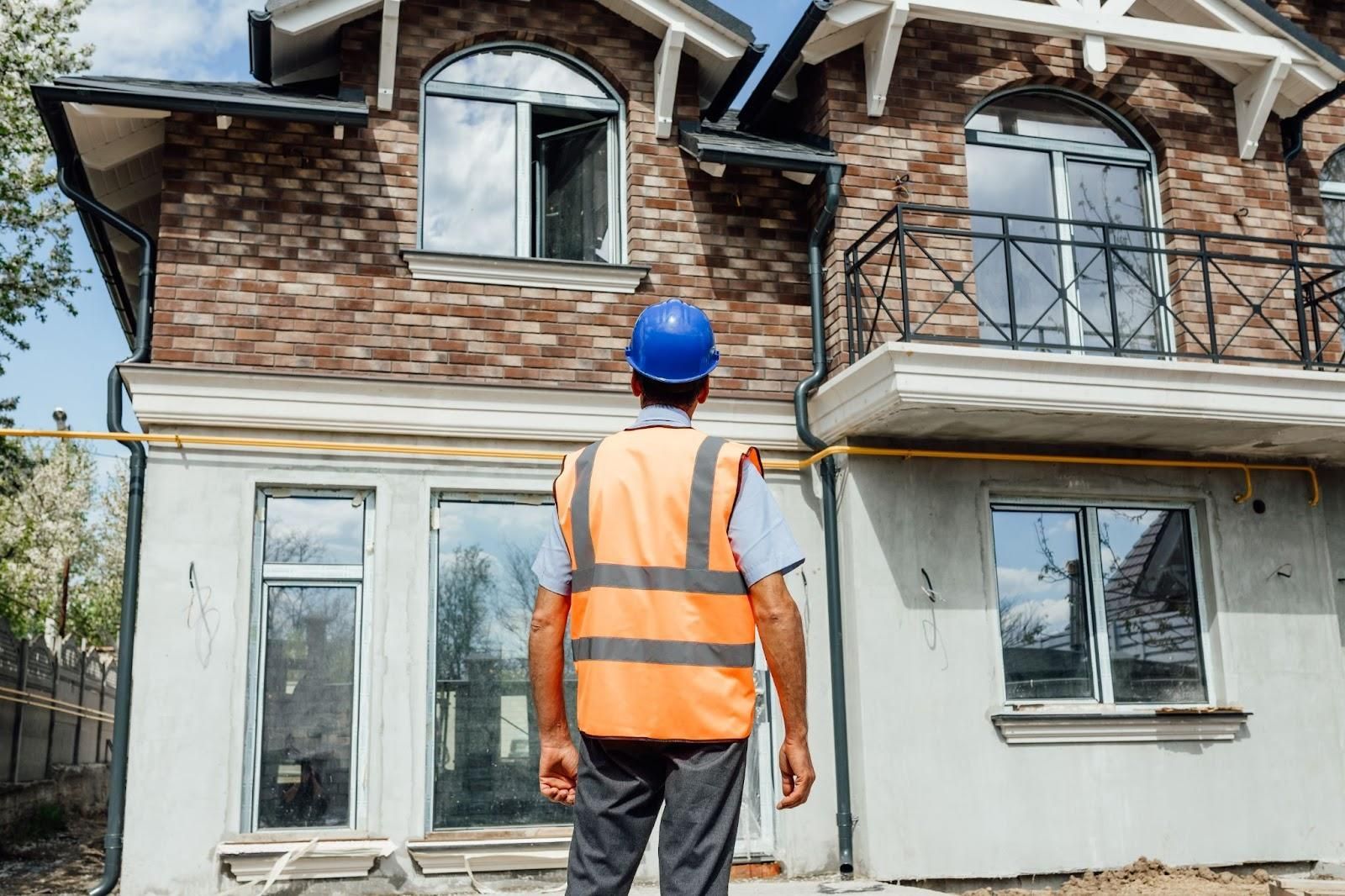Eco-Friendly Inspections: A Guide to Energy Efficiency
Incorporating energy efficiency into home inspections is more important than ever for those in Greater Houston and beyond. Here's why it matters:
- Energy Savings: Assessing a home's energy efficiency can lower utility bills by identifying areas that waste energy.
- Property Value: More buyers are looking for sustainable homes, which means energy-efficient properties could sell for higher prices.
- Environmental Impact: Reducing energy waste lessens carbon emissions, contributing to a healthier planet.
- Comfort and Safety: Inspections reveal opportunities for improved home comfort and safety through efficient heating, cooling, and insulation.
The average U.S. home wastes about 30% of the energy it consumes. This is similar to throwing away a new flat-screen TV every year. With 80 million homes built before 2000, many properties lack modern energy standards. Accurate inspections can ensure your home isn't part of that statistic.
These inspections benefit both buyers and sellers. Energy efficiency isn't just about saving money; it's about investing in comfort, safety, and sustainability. As more buyers demand environmentally friendly homes, an energy-efficient property can become a strong selling point.
Incorporating Energy Efficiency into Home Inspections
Benefits of Energy Efficiency
When you think about energy efficiency, you might picture lower bills or helping the planet. But there's more to it. Energy-efficient homes offer cost savings, reduce carbon emissions, and boost comfort. Let's break it down:
- Cost Savings: Efficient homes use less energy, which means lower utility bills. A simple energy audit can highlight areas where you can save. For example, sealing air leaks or upgrading to Energy Star appliances can make a big difference.
- Environmental Impact: By cutting down on energy use, you also reduce carbon emissions. This is crucial for fighting climate change. Homes account for a significant portion of carbon emissions, so every improvement helps.
- Comfort: An energy-efficient home stays warm in winter and cool in summer. Proper insulation and efficient HVAC systems ensure a comfortable living space year-round.
Tools and Techniques for Inspectors
Inspectors have a variety of tools and techniques to assess a home's energy efficiency. These tools help uncover hidden issues that might not be visible to the naked eye:
- Thermal Imaging: This tool helps inspectors see temperature differences in a home. It can reveal areas where insulation is lacking or where air leaks are occurring. By spotting these issues, homeowners can address them and improve efficiency.
- Blower Doors: A blower door test measures how airtight a home is. The less air that leaks out, the more energy-efficient the home is. This test can identify specific areas that need sealing.
- Infrared Cameras: These cameras detect heat differences. They can find hidden problems like moisture, missing insulation, or electrical issues that could waste energy.
Using these tools, inspectors can provide a comprehensive home energy report. This report outlines current energy usage and offers suggestions for improvement. It might include tips on upgrading appliances or adding insulation, along with potential cost savings and environmental benefits.
Energy audits and reports are valuable because they offer a clear picture of a home's energy profile. They help homeowners make informed decisions about improvements that can save money and improve comfort.
Incorporating these techniques into home inspections not only adds value but also aligns with increasing demand for sustainable living. As more people seek eco-friendly homes, these insights become a crucial part of the buying and selling process.
Evaluating Key Components for Energy Efficiency
Building Envelope Assessment
The building envelope is your home's first line of defense against the elements. It includes walls, windows, doors, and insulation, all working together to keep your home comfortable and energy-efficient.
- Windows and Doors: Inspectors look for gaps and drafts around windows and doors. Proper sealing and double-pane glass can significantly reduce energy loss. Energy-efficient windows and doors help maintain indoor temperatures and cut heating and cooling costs.
- Insulation: Insulation is key in reducing heat transfer. Inspectors assess the quality and condition of insulation in walls, ceilings, and floors. Well-insulated homes require less energy to heat and cool, leading to substantial savings.
HVAC System Evaluation
Heating, ventilation, and air conditioning (HVAC) systems are major energy users in any home. Inspectors evaluate these systems to ensure they are running efficiently.
- Furnaces and Air Conditioners: Inspectors check the condition and efficiency ratings of furnaces and air conditioners. Regular maintenance or upgrades can improve efficiency and extend the life of these systems.
- Thermostats: Smart thermostats can optimize heating and cooling schedules. Inspectors may recommend upgrading to programmable models that adjust temperatures automatically, saving energy and money.
Lighting and Appliance Inspection
Lighting and appliances also play a crucial role in a home’s energy profile.
- LED Lighting: Switching to LED bulbs can drastically cut energy usage. Inspectors may suggest replacing outdated lighting with LEDs, which last longer and use less electricity.
- Energy Star Appliances: Inspectors check major appliances like refrigerators, dishwashers, and washing machines. Energy Star-rated appliances are designed to use less energy, reducing utility bills and environmental impact.
By focusing on these key components, inspectors can help homeowners understand where improvements can be made for better energy efficiency. This not only leads to cost savings but also contributes to a more sustainable and comfortable living environment.
Renewable Energy and Water Conservation
Integrating Renewable Energy
Solar Panels are a great way to harness renewable energy right at home. When considering solar installation, roof orientation is crucial. South-facing roofs typically capture the most sunlight, maximizing solar potential.
- Energy Mix: Combining solar panels with other energy sources, like wind or geothermal, can create a more balanced and reliable energy system for your home.
To ensure your home is ready for solar, inspectors evaluate the roof's condition and orientation. They also assess if there are any shading issues that might affect solar performance.
Water Conservation Strategies
Conserving water is another vital aspect of making homes more sustainable. Inspectors can suggest various strategies to improve plumbing efficiency.
- Rainwater Harvesting: This involves collecting rainwater from roofs via gutters and storing it for non-potable uses like gardening or toilet flushing. Inspectors assess the feasibility of installing systems like rain barrels or larger tanks.
- Low-Flow Fixtures: Installing low-flow fixtures in showers, faucets, and toilets can significantly reduce water usage without sacrificing performance. These fixtures help conserve water and lower utility bills.
- Irrigation Systems: Efficient irrigation systems can greatly reduce water waste in landscaping. Inspectors might recommend drip irrigation, which targets the root zones of plants, reducing water loss through evaporation or runoff.
By incorporating these renewable energy and water conservation strategies, homeowners can reduce their carbon footprint and contribute to a more sustainable future. These changes not only lead to lower utility bills but also improve the overall efficiency and eco-friendliness of the home.
Frequently Asked Questions about Energy Efficiency in Home Inspections
How much does an energy efficiency audit cost?
The cost of a home energy efficiency audit can vary based on several factors, including the size of the home and the depth of the audit. On average, professional audits can range from $200 to $600. However, some utility companies offer rebates or discounts, making these audits more affordable. It's wise to check with local providers for any available incentives.
What are the benefits of a home energy assessment?
A home energy assessment provides a detailed look at how your home uses energy and identifies areas for improvement. Here are some key benefits:
- Cost Savings: By addressing inefficiencies, homeowners can significantly cut energy bills. Simple changes, like upgrading to LED lighting or improving insulation, often result in substantial savings over time.
- Environmental Impact: Reducing energy consumption lowers carbon emissions, contributing to a healthier planet. Energy-efficient homes are a step towards sustainable living.
- Comfort: Improvements in energy efficiency can improve home comfort. For example, better insulation keeps homes warmer in the winter and cooler in the summer.
How can I make my home more energy efficient?
There are several steps homeowners can take to boost energy efficiency:
- Seal Windows and Doors: Inspectors often find that gaps and leaks around windows and doors are major sources of energy loss. Sealing these areas can prevent drafts and improve efficiency.
- Upgrade Appliances: Switching to Energy Star appliances ensures that you're using the most efficient models available, reducing energy consumption and costs.
- Optimize HVAC Systems: Regular maintenance of heating and cooling systems can improve efficiency. Consider upgrading to a smart thermostat to better manage energy use.
- Use Renewable Energy: Incorporating solar panels or other renewable sources can significantly reduce reliance on non-renewable energy.
- Conduct a DIY Assessment: While professional assessments are thorough, a simple walk-through can help identify obvious issues like drafty windows or outdated light bulbs.
By taking these steps, homeowners can improve their home's energy efficiency, save money, and contribute to a more sustainable environment. For more detailed guidance, consider reaching out to professionals for a comprehensive energy audit.
Conclusion
Accurate Home and Commercial Services is committed to helping homeowners achieve greater energy efficiency and accept eco-friendly practices. By incorporating energy efficiency into home inspections, we provide valuable insights that guide homeowners toward sustainable living. Our comprehensive inspections cover key areas such as the building envelope, HVAC systems, lighting, and appliances, ensuring that every aspect of your home is optimized for energy efficiency.
Sustainable living is not just a trend—it's a necessity. As we face increasing energy costs and environmental challenges, making homes more energy-efficient is a practical solution that benefits both the planet and your wallet. Through our detailed inspections and expert recommendations, we empower homeowners to make informed decisions that lead to long-term savings and environmental conservation.
Whether you're looking to reduce your carbon footprint or simply lower your utility bills, Accurate Home and Commercial Services is here to assist you every step of the way. Our team of experienced inspectors in the Greater Houston area is dedicated to delivering thorough, high-quality inspections that prioritize your needs.
Ready to take the next step toward a more energy-efficient home? Contact Accurate Home and Commercial Services today to schedule your eco-friendly home inspection and start your journey toward sustainable living.











